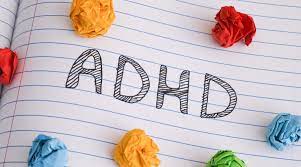Attention Deficit Hyperactivity Disorder (ADHD) is often seen as a hindrance, a barrier to productivity and focus. However, for many individuals with ADHD medicine creativity thrives within the chaotic folds of their minds. Harnessing this creativity and channeling it into a structured creative process can yield remarkable results. In this exploration, we delve into the intricate relationship between ADHD and the creative process, uncovering how individuals with ADHD navigate from idea conception to execution, and how their unique neurodiversity shapes their creative journey.
Understanding ADHD: The Neurological Landscape
ADHD is characterized by symptoms such as impulsivity, hyperactivity, and inattention. Neurologically, it involves differences in the dopamine pathways and frontal cortex functioning, affecting executive functions like planning, organization, and time management. However, it’s crucial to recognize that ADHD is not solely a deficit; it also entails strengths, particularly in divergent thinking and generating novel ideas.
The ADHD Mind: A Hotbed of Creativity
The ADHD mind is often likened to a whirlwind, constantly churning out ideas and associations. This hyperactivity of thought can be a double-edged sword, leading to distractibility but also fostering creativity. Research suggests that individuals with ADHD exhibit enhanced creativity, with studies linking ADHD traits to increased originality and fluency in idea generation tasks. The hallmark traits of ADHD—such as a propensity for risk-taking, unconventional thinking, and a disregard for societal norms—can fuel the creative process.
The Creative Process Unraveled
Creativity is not a linear process; it’s a dynamic interplay of divergent and convergent thinking. For individuals with ADHD, this process may appear even more nonlinear, characterized by bursts of inspiration, followed by periods of hyperfocus or distraction. Understanding the stages of the creative process—preparation, incubation, illumination, and verification—can provide a roadmap for individuals with ADHD to navigate their creative endeavors.
- Preparation: This stage involves gathering information, exploring different perspectives, and immersing oneself in the subject matter. Individuals with ADHD may excel in this phase due to their ability to hyperfocus on topics of interest and their inclination to explore diverse tangents.
- Incubation: During this phase, the mind unconsciously processes the gathered information, allowing ideas to simmer beneath the surface. For individuals with ADHD, this stage may involve periods of hyperactivity interspersed with moments of mental restlessness, as their minds continuously churn through possibilities.
- Illumination: The “Eureka!” moment, where ideas suddenly crystallize and connections are made. This moment of insight can be exhilarating for individuals with ADHD, who often experience intense bursts of creativity.
- Verification: In this final stage, ideas are evaluated, refined, and brought to fruition. Individuals with ADHD symptoms may struggle with the implementation aspect due to difficulties in sustained attention and organization. However, they may thrive in environments that allow for flexibility, spontaneity, and quick adaptation.
Strategies for Harnessing Creativity with ADHD
While ADHD can pose challenges throughout the creative process, several strategies can help individuals leverage their unique strengths:
- Embrace Hyperfocus: Encourage periods of hyperfocus on tasks that align with creative goals, allowing for deep engagement and immersion.
- Capture Ideas: Carry a notebook or use digital tools to capture ideas as they arise, preventing them from slipping away into the abyss of forgetfulness.
- Create a Stimulating Environment: Curate a workspace conducive to creativity, with minimal distractions but enough stimuli to keep the mind engaged.
- Break Tasks into Manageable Chunks: Divide larger projects into smaller, more manageable tasks to prevent overwhelm and maintain momentum.
- Utilize External Tools: Experiment with productivity apps, time management techniques, and organizational tools to structure and track creative projects.
- Embrace Iteration: Recognize that the creative process is iterative, allowing for experimentation, failure, and growth.
Conclusion: Embracing Neurodiversity in Creativity
ADHD presents unique challenges and strengths in the realm of creativity. By understanding the nuances of the ADHD brain and embracing its inherent creativity, individuals can navigate the creative process with greater insight and efficacy. Cultivating a supportive environment, implementing tailored strategies, and embracing the nonlinear nature of creativity can unlock the full potential of ADHD in the pursuit of creative expression. Ultimately, by embracing neurodiversity in creativity, we enrich our collective creative landscape, celebrating the diverse minds that shape our world.

